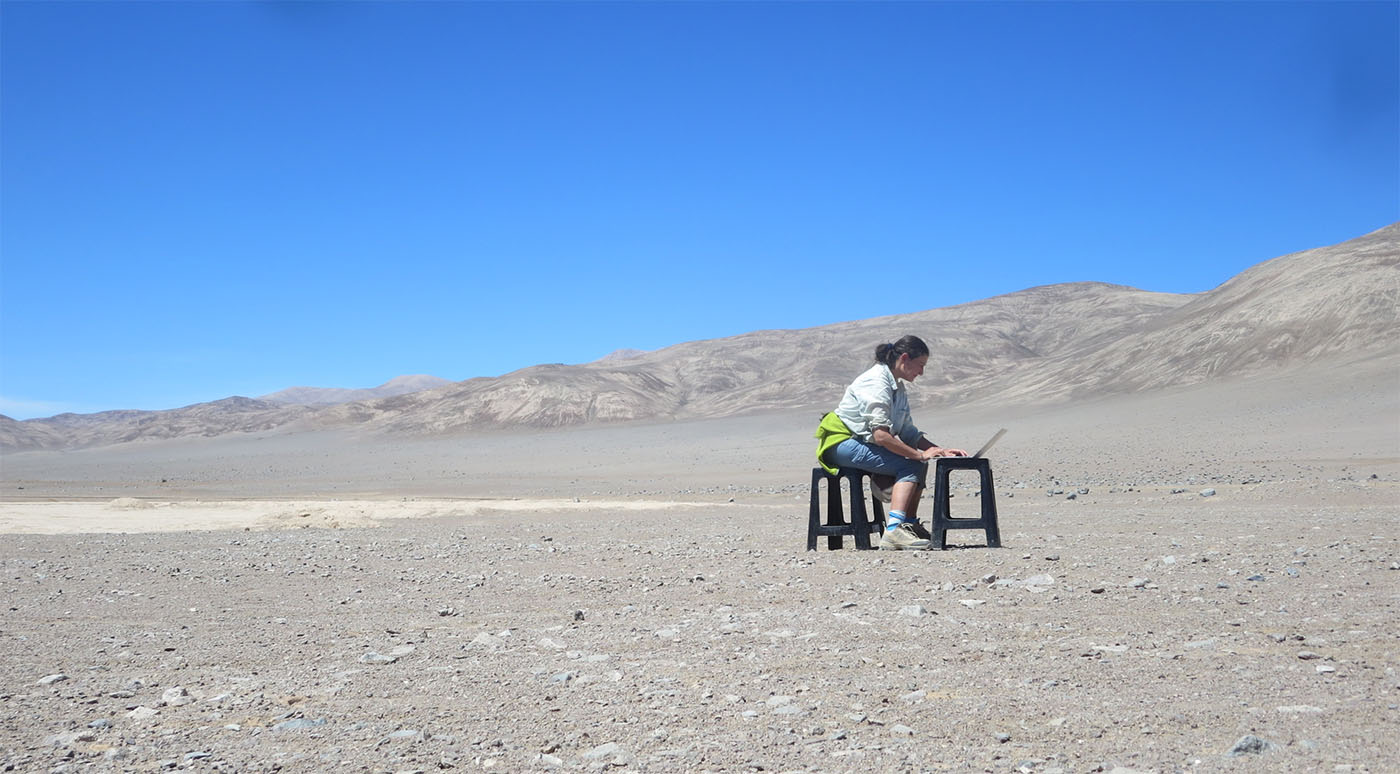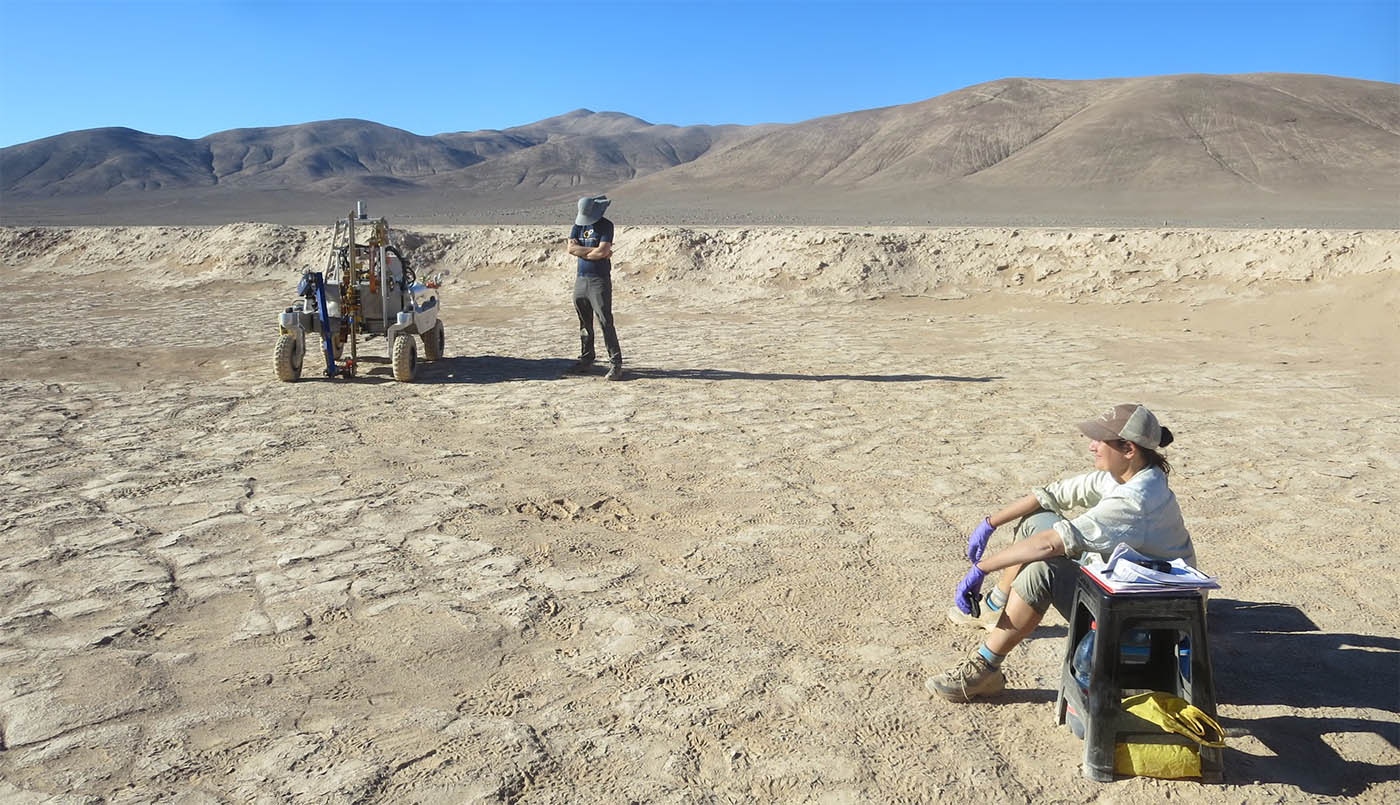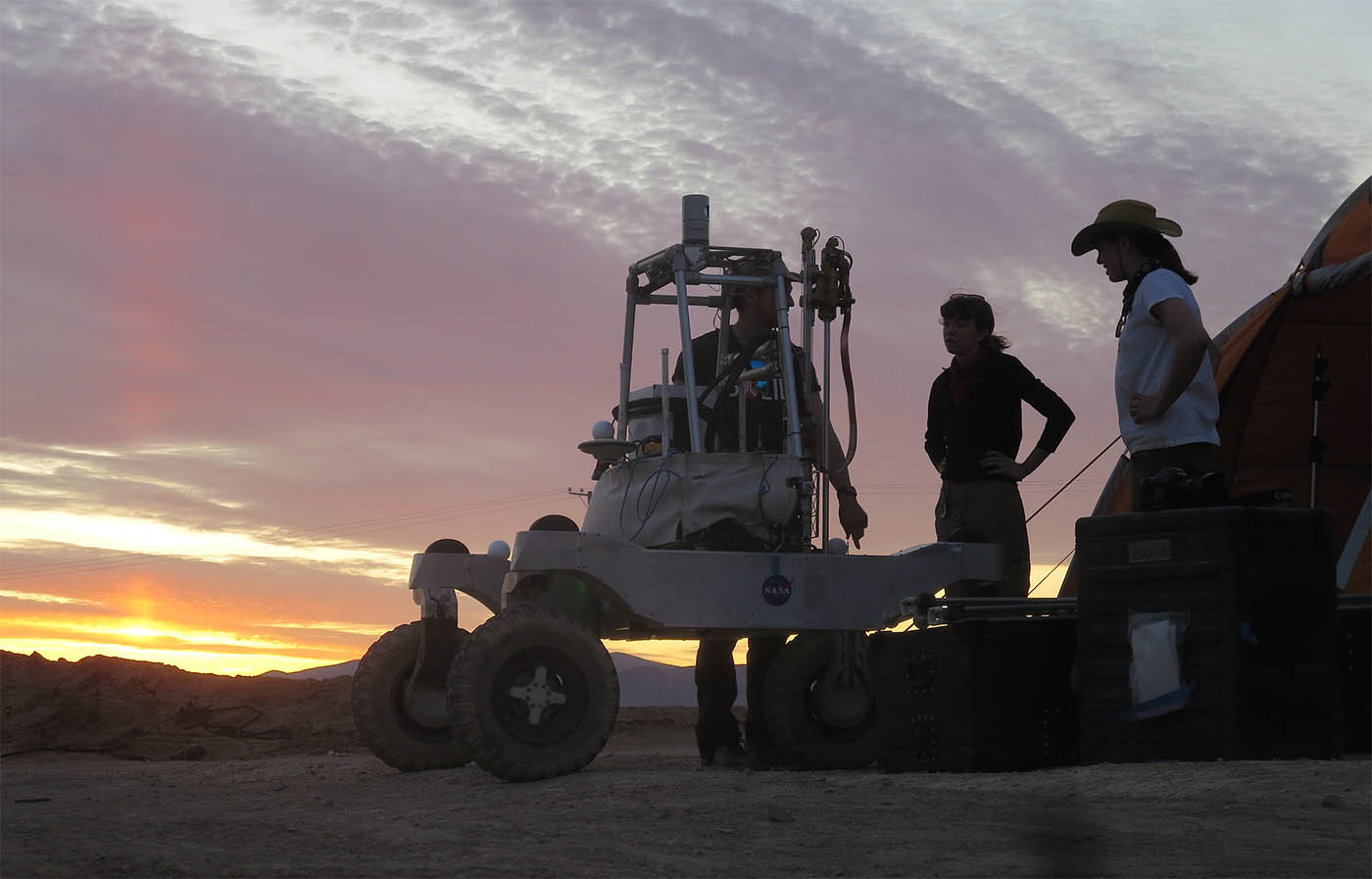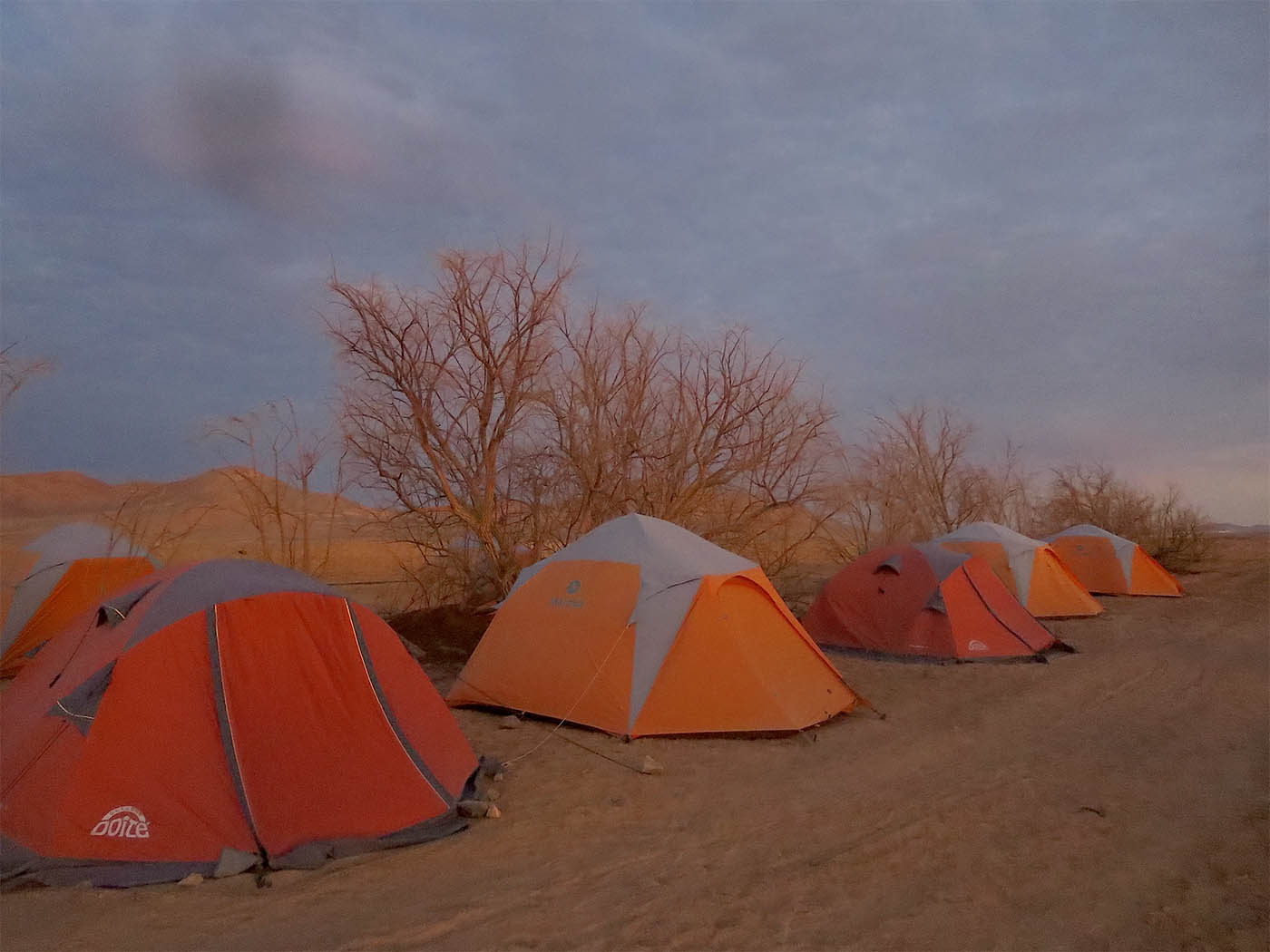
(Above: Day 9 Planetary Protection Protocols demonstration and bioburden mitigation for University of Antofagasta students.)
The Atacama Desert in Chile is one of the driest places on Earth, receiving less than 2mm of rainfall per year. Its climate is one of the reasons the Atacama is similar to Mars, which makes it an ideal location to test tools and equipment for future Mars missions.
SETI Institute astrobiologist Rosalba Bonaccorsi recently traveled to the Atacama with a team of researchers to test an instrument that might eventually be used to detect life on Mars. Since 2016, the Atacama Rover Astrobiology Drilling Studies (ARADS) team has been designing and testing tools and techniques for future planetary exploration in the Atacama. ARADS is preparing for future robotic astrobiology drilling missions to Mars.
Rosalba has been using a luminometer to measure a biological compound called adenosine triphosphate (ATP). ATP is present in all plants, animals, and microbial cells. The ATP Luminometry assay is a quick assay used to monitor contamination from humans working with other life-detection instruments, as well as to certify achieved cleanliness after microbial reduction and sterilization practices. The trial is a part of a 3-week simulated mission to test life-detection instruments for use on an autonomous rover-mounted robotic drill.
In addition to testing the equipment, Rosalba gave a demonstration of bioburden monitoring to prevent contamination of drill and sampling device to a group of students from the University of Antofagasta. The students observed the NASA trial in the Mars-like playa located near the Yungay station.
The ARADS project is led by Brian Glass (NASA Ames Research Center) and involves many other team members. Scientists and engineers from the SETI Institute including Rosalba Bonaccorsi, Kim Warren Rhodes (ecologist), Kathryn Bywaters (microbiologist), and Thomas Stucky (drill engineer).
DAY 10

DAY 11


DAY 12







